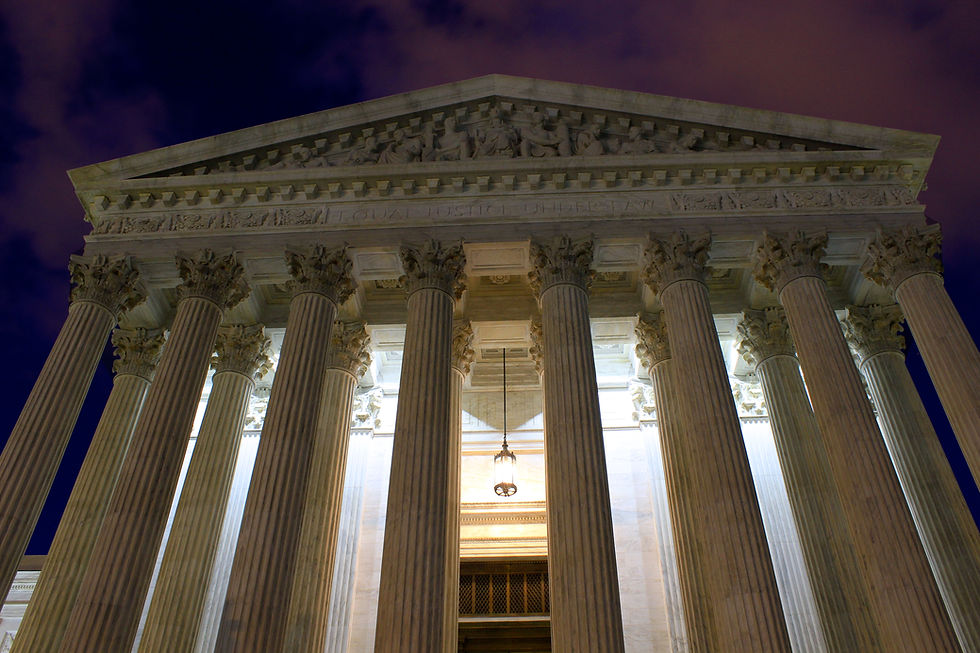Supreme Court Poised to Gut Core of the Voting Rights Act Likely Decreasing Black Representation in Congress
- Natalie Frank
- Oct 17
- 3 min read
Most consequential civil-rights decision in decades quietly taking shape at the high court
Natalie C. Frank, Ph.D October 18, 2025

WASHINGTON — The Supreme Court of the United States signaled on Wednesday a dramatic shift in the enforcement of the Voting Rights Act of 1965 (VRA), suggesting that one of the statute’s last robust protections, Section 2, may be scaled back or rendered toothless. During 2½ hours of argument, the court’s conservative majority appeared sharply skeptical about longstanding precedents that have enabled states to create districts designed to protect minority voters’ electoral influence.
The case now under review grew out of redistricting in Louisiana following the 2020 census. With around one-third of the state identifying as Black, the 2022 map offered just one majority-Black district among its six seats, a disparity plaintiffs argued violated Section 2’s ban on vote-dilution. A federal district judge agreed and ordered the legislature to draw a map with two majority-Black districts. That ruling was affirmed by the U.S. Court of Appeals for the Fifth Circuit, which gave Louisiana until January 2024 to enact the change or risk a court-drawn map.
In response, the state legislature passed a 2024 map creating a second majority-Black district, which elected former Congressman Cleo Fields. The new map was challenged by a group of “non-African-American” voters who contended it violated the Equal Protection Clause of the Fourteenth Amendment because race predominated in drawing the lines. A three-judge federal panel agreed, blocking the state from using the map in future elections. But the Supreme Court put that decision on hold, allowing the map to stand for 2024.
At Wednesday’s argument, the court directed both parties to address a new question: whether a state’s intentional creation of a majority-minority district violates either the Fourteenth or the Fifteenth Amendment. The breadth of that query signals a wider potential attack on Section 2 itself, an approach conservative litigants have been cultivating for years.
For the plaintiffs defending the map, civil-rights lawyer Janai Nelson invoked precedent: “[A] mere two years ago, in Allen v. Milligan, a case nearly identical to this one, the Supreme Court ‘noted that under certain circumstances, it has authorized race-based redistricting to remedy state redistricting maps that violate Section 2.’”
Louisiana Solicitor General Benjamin Aguiñaga countered that past jurisprudence “has placed states in impossible situations where the only sure demand is more racial discrimination for more decades.” His position: Section 2, “insofar as it requires race-based redistricting, is unconstitutional.”
Chief Justice John Roberts, who authored the court’s Milligan opinion, appeared to distance himself from any categorical reliance on that precedent. He remarked that Milligan “took the existing precedent as a given,” and that the record there involved “what turned out to be an improper evidentiary showing.”
Several other justices echoed that precision-heavy focus.
Justice Amy Coney Barrett pressed Nelson on whether the court had concluded that complying with Section 2 is a compelling interest under the Fourteenth Amendment in cases where the state itself does not believe a violation has occurred.
The line of questioning reflects a broader conservative re-examination of race-based remedies. Justice Brett Kavanaugh, who joined the Milligan majority, reiterated a theme from his concurrence there: “[T]his Court’s cases in a variety of contexts have said that race-based remedies are permissible for a period of time, sometimes for a long period of time, but … they should not be indefinite and should have a[n] end point.”
On the opposing bench, Justice Ketanji Brown Jackson reminded her colleagues that Section 2 functions not as a remedy itself but as a mechanism for determining when a remedy is necessary. “It doesn’t need a time limit,” she insisted, because “it’s not doing any work other than just pointing us to the direction of where we might need to do something.”
Justice Elena Kagan, meanwhile noted that Louisiana had recycled arguments similar to those the court rejected in Milligan. “In the answers you just gave to me,” she said, “it seems to me that you repeated each and every one of those arguments that we rejected.”
Outside the courtroom, observers warned that the stakes are historic. If the court limits or invalidates Section 2, state legislatures could enjoy far less oversight when drawing maps in the South and elsewhere—precisely where Black and Latino voters have relied on it to fight dilutive practices. Analysts estimate such a shift could imperil up to 19 congressional districts.
From Washington’s vantage, this is not just a case about lines on a map, it may well recalibrate the balance of power in the U.S. House of Representatives and the protections of minority voters for decades to come.






